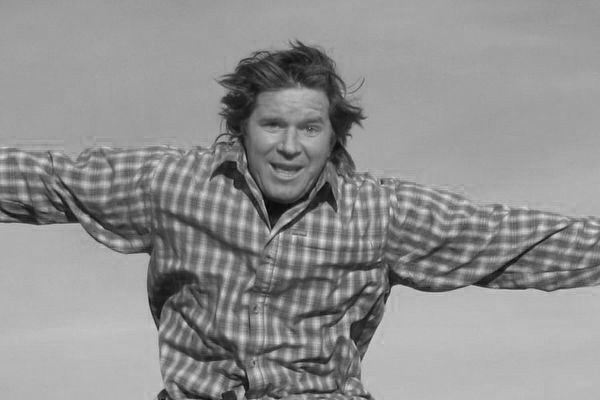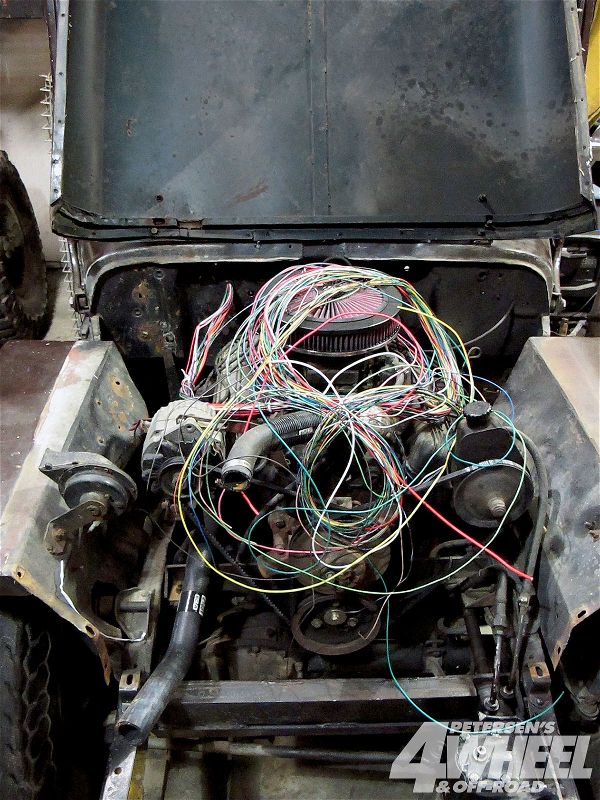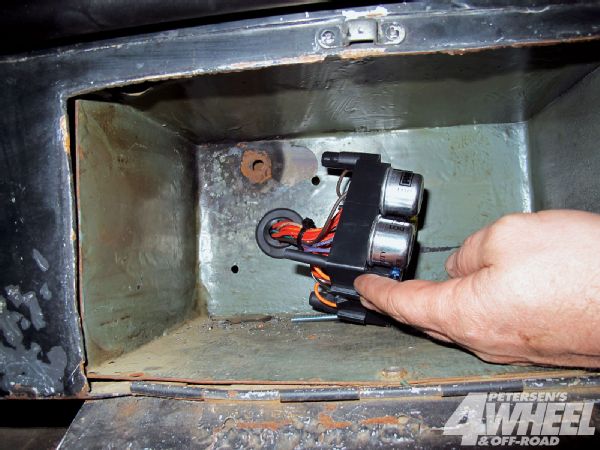
 Fred Williams
Brand Manager, Petersen’s 4Wheel & Off Road
Fred Williams
Brand Manager, Petersen’s 4Wheel & Off Road
As a rule, the older the Jeep is, the less stuff is required to make it run. And when you choose to use mechanical gauges, as we're doing with our '49 Flatfender, it should mean even less wires. Since the Jeep has been through at least a couple rebuilds and repowers over its lifetime it has gathered a nest of wires, switches, and plugs. We have no plans for a full restoration on this retro wheeler, but we do want a reliable running machine with working gauges, head/tail lights, and a power outlet to run a CB or electric cooler.

To achieve our electric goals we called up the guys at Painless Performance for their 12-circuit '74-and-earlier Jeep CJ harness kit. We eventually used even less than 12 circuits to route the juice around our little Jeep by cutting out things like the third brake light, electric fan, and heater circuits.
The secret to wiring a vehicle is taking your time and laying out the harness before cutting and attaching any wires. We spread the job out over a couple hours each night for a week, and the harness fell in place quickly and cleanly.
Even Less Painful
If you are just wiring up an engine, or a vehicle without turn signals and many extra circuits, then we recommend the Painless CSI (Charging, Starting, Ignition) Universal Engine Harness PN30830. This harness has everything needed to power any non-fuel-injected engine. The harness would be perfect for a carbureted buggy, and there are additional circuits for some simple lights, or an electric fuel pump or fan.
1. Job 1 of wiring is laying out the harness to find the best place for the fuse block. Drill and grommet any firewall holes, and loosely route the wires to their destinations. We decided the fuse block would be well protected yet still easily accessible inside the glovebox a former owner had built into the passenger-side dash.
 PhotosView Slideshow
PhotosView Slideshow


 PhotosView Slideshow
PhotosView Slideshow


